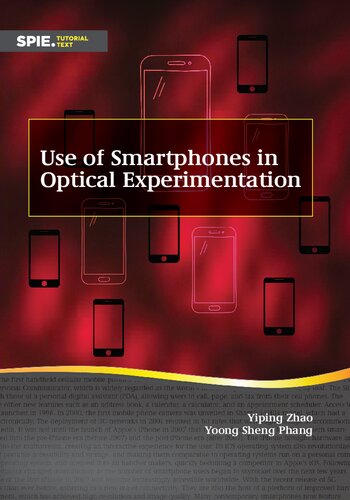Product desciption
Use Of Smartphones In Optical Experimentation 1st Yiping Zhao Yoong Sheng Phang by Yiping Zhao; Yoong Sheng Phang 9781510654976, 9781510654983, 1510654976, 1510654984 instant download after payment.
"The purpose of this book is to show that by using smartphones and other low-cost materials or 3D printers, different optical labs can be designed and realized which leverage the entire technological capability of the smartphone and tablet. The content of the book includes the demonstration of fundamental geometric and physical optical principles such as the law of reflection, the law of refraction, image formation equations, dispersion, Beer's law, polarization, Fresnel's Equations, optical rotation, diffraction, interference, blackbody radiation, etc. as well as many practical applications, such as the design of a monochromator and a spectrometer, the uses of the Gaussian beam of a laser, the monitoring of water pollution, and understanding the colors of LED lights, butterflies, peacock feathers, plants, and flowers, estimation of the temperature of incandescent lamp or sun, etc. The experimental designs in the book showcase only a hint of the power of a smartphone-based physics lab. All the experimental results are adapted from undergraduate student's lab reports and some of them may not be very accurate. This book can be used as a lab instruction book for a high school or undergraduate "Optics" lab class, especially for on-line based optical lab, or act as a reference book for physics instructors and science teachers who want to develop smartphone based optical labs for class demonstrations and biological and environmental applications. A special chapter, Chapter 21 showcases an example lab schedule for a college optics lab in COVID-19 pandemics. It can be a useful reference book for K6-12 students who are interested in exploring science or engineering projects, for undergraduate college students to get a hands-on experience with various topics in optics, and for anyone who wants to learn fundamental STEM concepts by designing and performing experiments anywhere at an affordable price. It can also serve as a hobby book for people who want to explore more in opti


